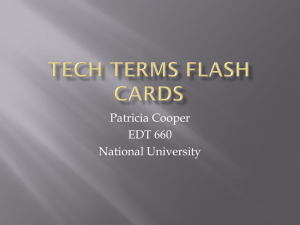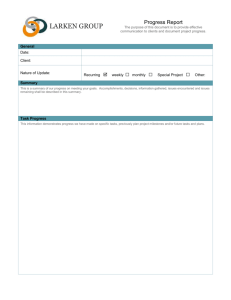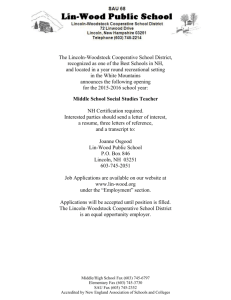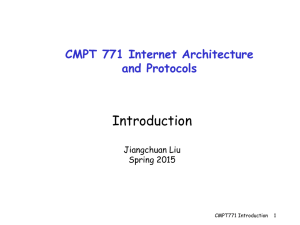de7-2_aam
advertisement
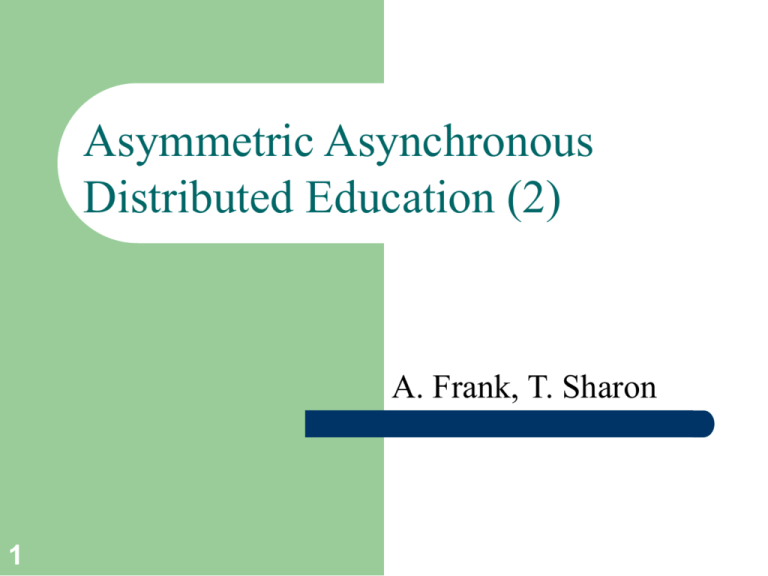
Asymmetric Asynchronous Distributed Education (2) A. Frank, T. Sharon 1 Asymmetric-Asynchronous Technologies 1. Correspondence study – – – Print-based Audio-based Video-based 2. Computer-Based Training (CBT) 3. Web-Based Training (WBT) 2 2. Computer-Based Training (CBT) • Instruction delivered on a computer without instructor’s involvement. • Delivery media: – Diskettes – CD-ROM – DVD 3 Modern MM CBT • Multimedia, Hypermedia, and a stilldeveloping generation of powerful, sophisticated, and flexible computing tools have gained the attention of distance educators in recent years. • The goal of computer-based multimedia is to integrate various voice, video, and computer technologies into a single, easily accessible delivery system. 4 Advantages of CBT • • • • • • • 5 Multiple Modes of Learning Good for drill/practice/simulations Immediate feedback Self-paced Increased learner centeredness Multimedia support Cost-effective Limitations of CBT • Access to computer and computer literacy is required. • Requires large storage capacity. • Platform dependant • Lack of instructor • Limited interactivity • Computer technology is changing rapidly. • Costly development and revisions. 6 3. Web-Based Training (WBT) • Instruction delivered via a computer connected to a network (Internet or Intranet). • Delivery Media: – HTML (and other markup/scripting languages) – Audio streaming – Video streaming 7 Audio Streaming • Provides audio track for "still" images such as PowerPoint slides, spreadsheets, text screens. • Requires "player" specific to streaming system/software used. 8 Video Streaming • Works best for “talking heads“; full motion or high detail stream difficult. • Requires "player" specific to streaming system/software used. • Requires considerable hardware, software and network resources. • Number of on-line users can affect backbone network performance. 9 Advantages of WBT • Facilitates "one-stop" access to up-to-date course content, assessment tools, and interaction components. • Immediate feedback • Self-paced • Learner centeredness • Platform independent • Multimedia support • Provides security and authentication • Provides student tracking 10 Limitations of WBT • Access to computer and computer network literacy is required. • Connection to the Internet is needed • Reliance on Internet and ISP • Danger of viruses • Lack of instructor • Limited interactivity • Internet technology is changing rapidly • Lack of standards 11 Support Technologies • • • • 12 E-mail and file attachments Bulletin-Board FAX FTP E-mail Advantages • • • • Connections can be made at any time. Messages sent to one or many. Complex ideas can be discussed. Computer files can often be attached to messages. • Multiple messages can be accessed at one time. 13 E-mail Limitations • No pictures, video or audio unless downloaded as a file or support for MM-Mail. • Need computer and mail software, modem or network connection. • Response time (to sender and back) may be uncertain. • Mail can get lost. 14 Bulletin-Board Advantages • Multiple topics or ideas can be discussed concurrently. • Same advantages as E-mail, with more control and functions. 15 Bulletin-Board Limitations • No pictures, video or audio • Need computer with modem or network connections • Online time can be extensive and expensive • Bulletin-board system requires one line for each connection to it 16 FAX Advantages • Uses POTS lines • FAX has become a very widespread format available in many locations • Easy to use, requires little training • Text, pictures and graphics can be transmitted 17 FAX Limitations • • • • • 18 No video, animation or sound Must have fax machine at both locations Usually only black and white Some fax paper is low quality Quality of copy varies greatly References • University of Maryland University College, Models of Distance Education http://www.umuc.edu/ide/modlmenu.html • California State University at Sacramento, Distance and Distributed Education http://www.csus.edu/iaup/review/html_t/t08.htm • Engineering Outreach at the University of Idaho, Distance Education at a Glance http://www.uidaho.edu/evo/distglan.html • University of Illinois, An Introduction to Distance Learning Technology http://www.outreach.uiuc.edu/ws97/intro/index.htm 19
